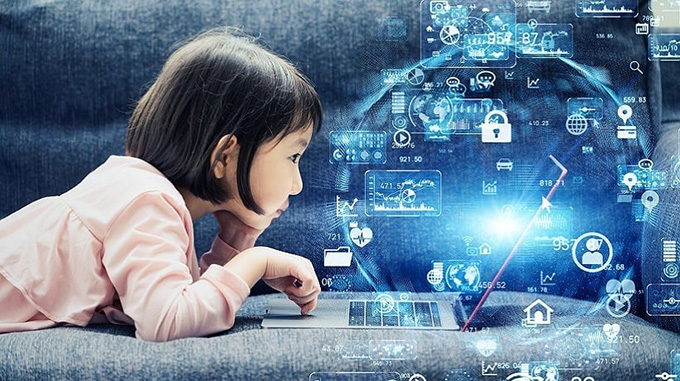
UNESCO has recently published the report Technology in education: a tool on whose terms? . This contains guidelines to be taken into account when planning the use of technology in schools, by both governments and educational centers and teachers themselves.
To delve into the subject, it is convenient to approach three different processes . On the one hand, digitization, alluding to the mere replacement of certain traditional devices by other digital ones that fulfill the same function. On the other hand, digitization, which entails a change in teaching processes. And, finally, to the digital transformation that implies a change of attitude, relationships and even epistemology , that is, it affects the theory and the very capacity of human knowledge.
Manuel Castells delved into the certainty that the network weaves a new society and a new concept of knowledge. This has to give rise, as Roberto Aparici points out , to new structures and actions consistent with the new demands of society.
The mirage during the pandemic
The covid-19 crisis brought us the mirage of a digital revolution at school. But in reality, in most cases, the school went through a dizzying digitization process, virtually replacing what was not physically available.
At the end of the confinement period, in many cases, this substitution has ceased to make sense, leading to the confusion of the necessary process of profound transformation with the use of devices as substitutes for a physical reality.
Between excess and inclusion
The Spanish summary of the UNESCO report states that educational technologies “can have a detrimental effect if used inappropriately or excessively.” This statement is obvious. Any sports practice can also have a detrimental effect if it is used inappropriately or excessively and does not stop practicing sports at school.
At the same time, the report points out that “accessible technology and universal design offer new possibilities to students with disabilities”, as well as allowing educational action to be brought closer to students who otherwise would not be able to access it.
Personalization of teaching
Technology can support teaching and learning in multiple ways, facilitating personalization. The personalization of learning, in the words of César Coll , “forces teachers to also personalize their educational action, to situate themselves as a learner and to seek and use teaching resources that often go beyond their own knowledge and also what that can enter between the walls of the school”. Information technologies and the Internet multiply the possibilities to implement these dynamics.
Technology, in order for it to report an educational benefit, must be the subject of research and adequate planning in the field of digitization, and even digital transformation. Not only that, in many cases tools not initially conceived for the educational space are used, which must be properly contextualized and analyzed.
More research
The report calls for the need to invest more in educational research, but this should not be an obstacle to its responsible use, as with a great multitude of educational proposals.
The report points out that “teachers often feel unprepared and lack confidence to use technology in teaching”, but the focus should not be so much on mastering the device as on the end of this use.
As Paulo Freire pointed out , education is training linked to ethics, and not training. This training should also include dialogue in the school itself, also extended to the online educational community through the Internet.
The response to the new technological tools must go beyond specialization in the technology itself: it must delve into the arts and humanities in order to “reinforce the responsibility, empathy, morality, creativity and collaboration of the students”, as the UNESCO report points out. These reflections are connected with the need to make a profound transformation of the educational fact.
The digital gap
Internet access, which is clearly unequal, is recognized as an “essential catalyst for economic, social and cultural rights”. At the same time, it is pointed out that there is a risk that digitization could benefit already privileged students and further marginalize others.
However, it is evident that the suppression of technology in schools would not allow the democratization of Internet access that is recognized as a practically universal objective. The most privileged students would not stop having the resource in the private space. The objective must be to achieve a true universalization of a fundamental resource and educate the new generations in its use as a means of democratic empowerment.
Far from interpreting the report as a call to withdraw technology from schools, I understand that it calls for the educational community to assume responsibility for implementing these resources, inherent to this time and to a school that transforms society, from some clear principles of equity and authentic educational transformation.
Author Bio: Angel Martinez Leon is a Professor Degrees of Education at San Jorge University
